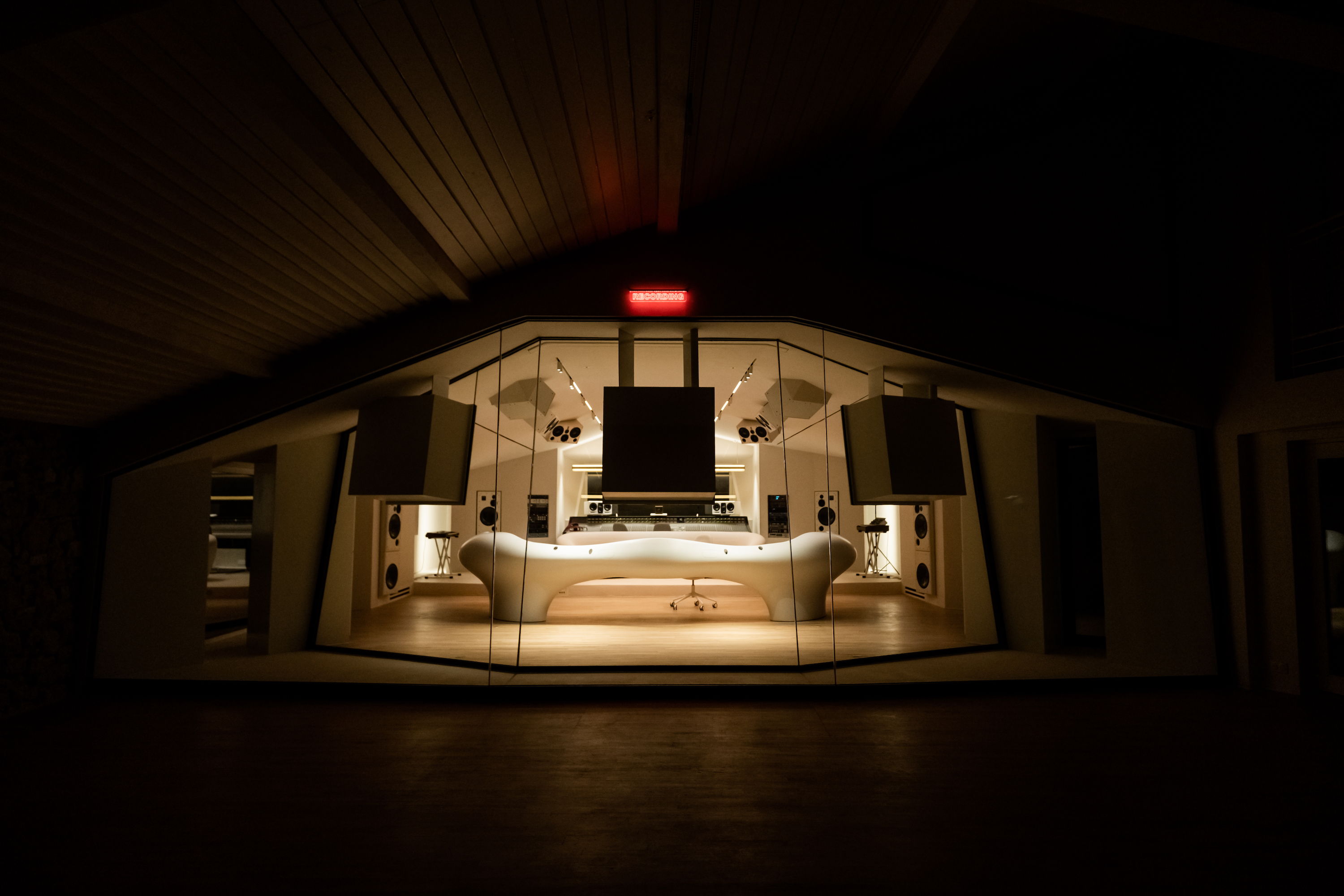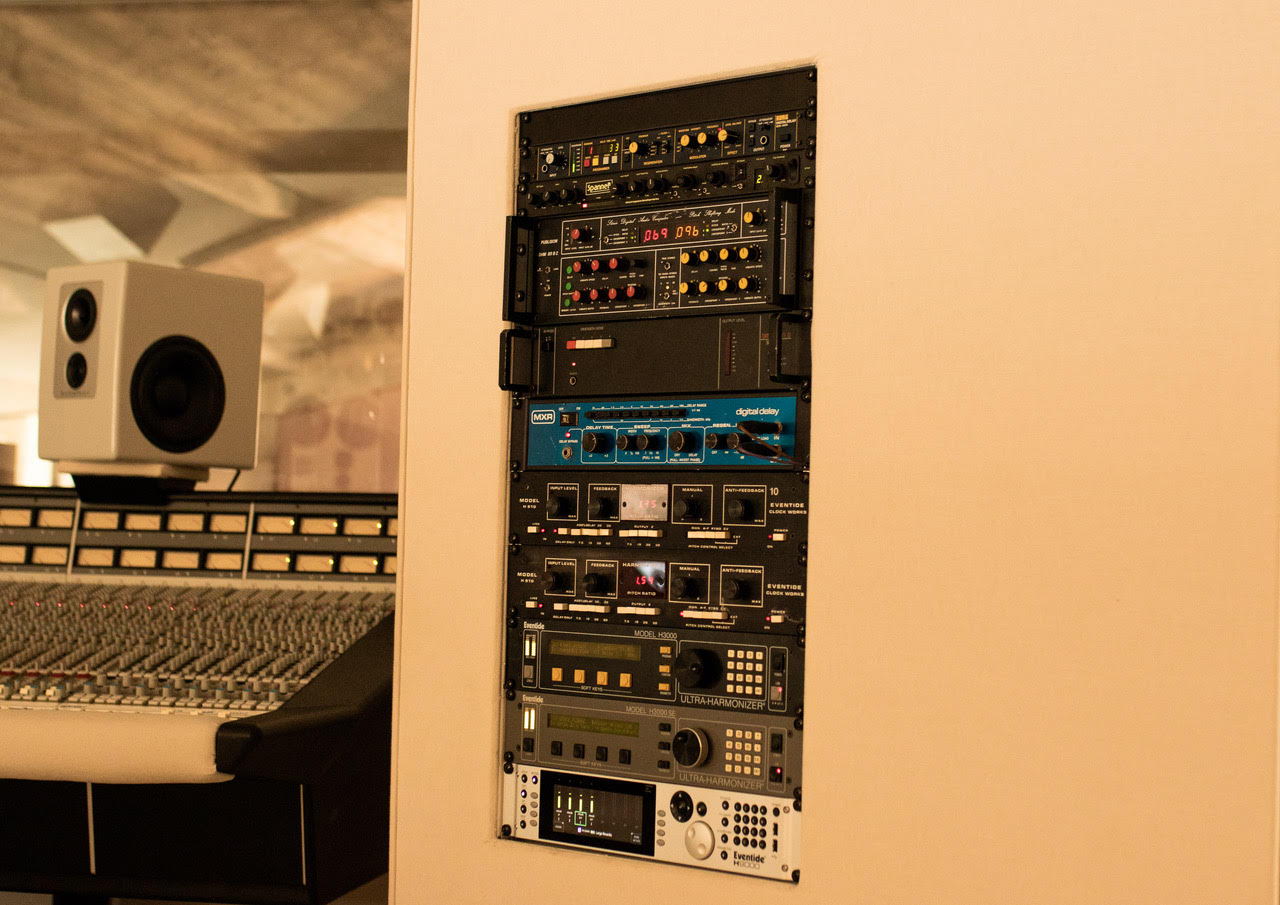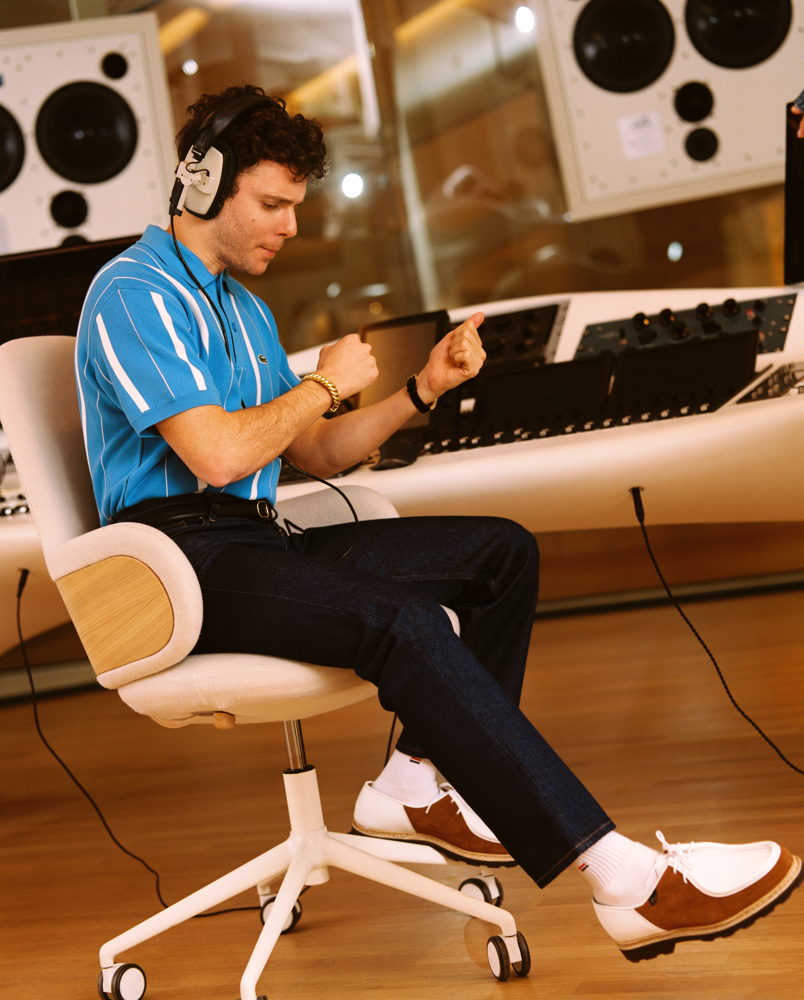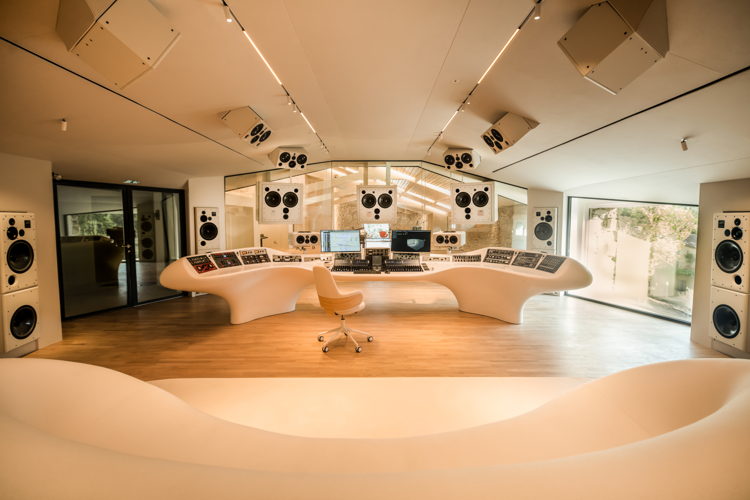Legendary Miraval Studios Celebrates Grand Reopening, Driving into Future with Eventide H9000
Miraval Studios integrates an Eventide H9000 multi-effects processor, two H3000 Ultra-Harmonizers and two vintage H910 Harmonizers, reopening historic facility
Correns, France, February 13, 2024 —Honoring the legacy of Miraval Studios while also supporting today’s recording workflows, award-winning French engineer, producer and composer Damien Quintard outfitted one of the facility’s racks with Eventide’s current flagship H9000 multi-effects processor, two classic H3000 Ultra-Harmonizers and a pair of the world's first digital effects processor, the H910 Harmonizer. Quintard partnered with Hollywood star Brad Pitt to renovate the historic recording facility, located on the 2,200-acre Château Miraval estate — a working vineyard — in the south of France, and reopened it in summer 2022.

“I am grateful for the opportunity to work with some of the finest equipment in the world,” Quintard says. “At Miraval Studios, we understand that the artist's vision is of utmost importance, and our gear and equipment serve as tools for the engineers to help the artists bring that vision to life. With this in mind, we aim to provide as many options as possible to help artists achieve their desired sound. I like to have fun with the classic H910 or the modern H9000. The more flavor and colors we have, the merrier!”
The residential facility has hosted many notable world-class artists and projects in the years since it was established by renowned French jazz pianist and composer Jacques Loussier and sound engineer Patrice Quef in 1977. Pink Floyd put the studio on the map when the band visited in 1979 to record portions of The Wall, which went on to sell over 30 million copies worldwide. They were soon followed by AC/DC, Judas Priest, The Cure, UB40, Wham!, Yes, Sting and many others. In the early 2000s, Rammstein, Courtney Love and Muse added their names to the list of artists who have recorded at Miraval.
“One of the most challenging decisions we faced was whether to renovate or completely rebuild,” Quintard continues. “The legacy of this iconic place is so rich that we knew we had to preserve and protect it, yet also propel it into the future. We wanted to honor its history by utilizing the legendary equipment that has defined the sound of countless great albums, while also creating something fresh and innovative. Ultimately, we chose to push the boundaries by expanding the physical space, opening up windows to offer breathtaking views and a story to watch for the musicians and engineers who work here. We poured all of our passion into creating an environment that would inspire artists for generations to come. No compromise; all-in for inspiration.”

The Studio One offers 25-foot ceilings with a 1,000-square-foot control room separated from the 3,500-square-foot wood and stone tracking space by a floor-to-ceiling expanse of glass. The control room is outfitted for Dolby Atmos productions with a custom ATC monitor system and is anchored by a space age custom console, dubbed the Spaceship, housing vintage analog and modern digital audio equipment. The room also houses the studio’s original SSL 4000 G+ analog mixing console.
“While it's exhilarating to have access to top-of-the-line gear for major sessions, I am increasingly drawn towards the beauty of simplicity in the creative process,” comments Quintard, who is primarily known for his catalog of work in the classical music genre, won an Emmy Award for the live and direct-to-tape mix of the 2015 European Olympic Opening Ceremony in Baku and was a pioneer of the Dolby Atmos format in France. “I always strive to keep my equipment setup as straightforward as possible.”
The facility additionally offers post production, film scoring, e-mixing and film editing services. There are three video and sound editing suites, a microphone locker housing Quintard’s 170-plus collection, reverb room, kitchen and other guest amenities and accommodation.

Beyond the technical design and integration at Miraval Studios, the timing of the reopening was also a challenge, he says. “It was no easy feat, especially amidst the challenges posed by the pandemic, to reopen a historic place. The joy of finally opening our doors and receiving such iconic artists as Sade or Steve Lacy, who have graced our space, has made it all worth it. We are thrilled with the overall response we have from the music industry. We had to make sure the new version would honor the past and push for the future.”
Sade was the first artist to record at the facility after it was remodeled and relaunched, and others have followed, but it’s still early days for the latest chapter in the story of Miraval, Quintard believes. “I don’t think it’s time for us to be proud of anything yet. There is still so much to do, to learn, to enhance. Here, we’re really passionate about being a part of something greater, creating beauty each day. I really think we’ll know if we did something great in 10 or 20 years. In the meantime, we have to work and work!”
Banner photo credit: Mathieu Spadaro
About Eventide
Since 1971, Eventide has remained at the forefront of recording technology. In 1975 they revolutionized the audio industry by creating the world’s first commercially available digital audio effects unit, the H910 Harmonizer®. Since then, their legendary studio processors, effects pedals, and plug-ins have been heard on countless hit records.
Jeff Touzeau
2501_EventideMiraval.docx
DOCX - 18 Kb






